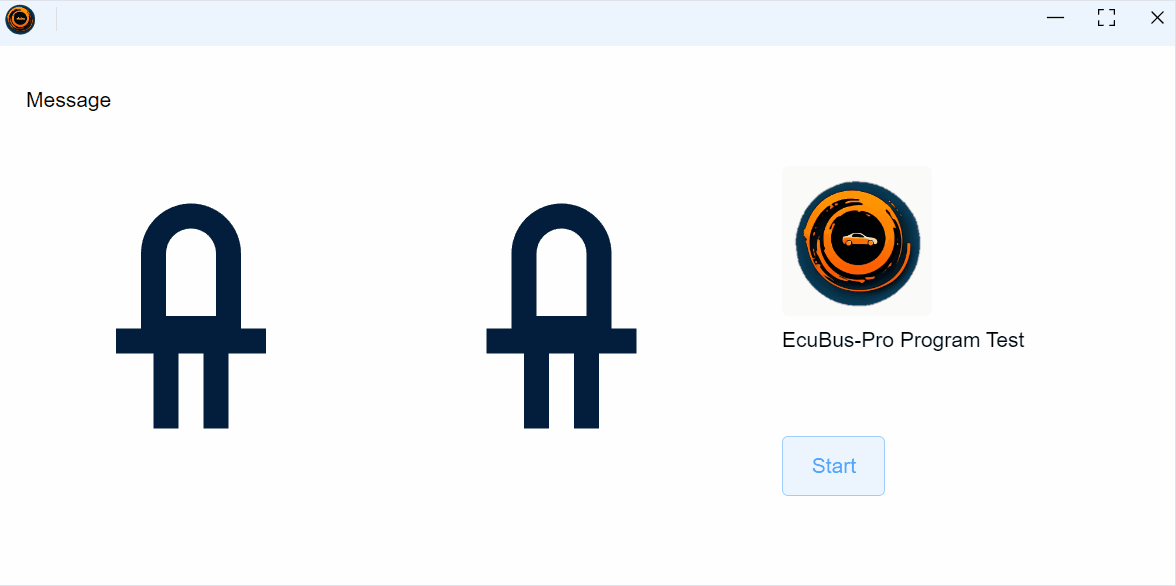Led Control Panel Example
This example demonstrates a simple program execution panel in EcuBus-Pro, including status indication and message display.
Features Demonstrated
Program Execution Control
- A "Start" button toggles the execution of a simulated program.
- When started, the program runs for a random time (2-5 seconds) and then fails automatically.
Status Indication
- Two large LED indicators:
- Red LED: Lights up when the program fails.
- Blue LED: Lights up when the program succeeds (not used in this demo, but present for extension).
- Status message area displays the current state (e.g., "Starting program execution", "Program failed after random time", "Manual stop of program execution").
- Two large LED indicators:
Panel Layout
- Includes a logo and title for easy identification.
- All controls and indicators are arranged in a grid for clarity.
Variables Used
| Variable Name | Type | Purpose / Description |
|---|---|---|
| Program.run | number | Controls the start/stop of the program (triggered by the Start button). |
| Program.success | number | Indicates if the program succeeded (set to 1 on start, 0 on failure/stop). |
| Program.failed | number | Indicates if the program failed (set to 1 on failure, 0 otherwise). |
| Program.msg | string | Displays the current status message in the panel. |
More information about variables can be found in the Variable section.
How It Works
- Press the Start button to begin the program.
- The message area will show "Starting program execution".
- After a random interval (2-5 seconds), the program will simulate a failure:
- The message updates to "Program failed after random time".
- The red LED lights up.
- The Start button resets.
- You can manually stop the program by toggling the Start button off, which will show "Manual stop of program execution".
Example Panel

Code Overview
- panel.ecb: Defines the panel layout, variables, and UI elements.
- program.ts: Handles the logic for starting, stopping, and simulating program failure.
typescript
import { setVar } from 'ECB'
let timer: NodeJS.Timeout
Util.OnVar('Program.run', async (args) => {
if (args.value == 1) {
setVar('Program.success', 1)
setVar('Program.failed', 0)
setVar('Program.msg', 'Starting program execution')
timer = setTimeout(async () => {
setVar('Program.msg', 'Program failed after random time')
setVar('Program.failed', 1)
setVar('Program.success', 0)
setVar('Program.run', 0)
}, randomTime)
} else {
setVar('Program.msg', 'Manual stop of program execution')
setVar('Program.success', 0)
setVar('Program.failed', 0)
clearTimeout(timer)
}
})
const randomTime = Math.floor(Math.random() * (5000 - 2000 + 1)) + 2000